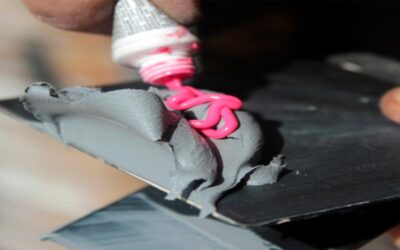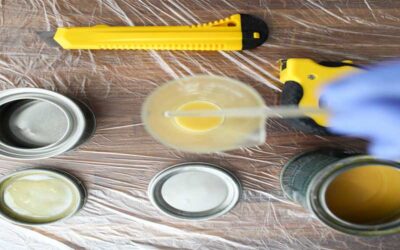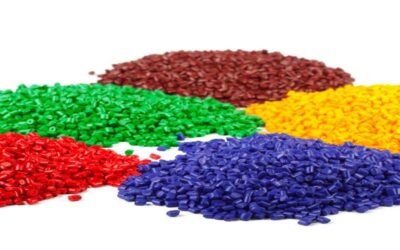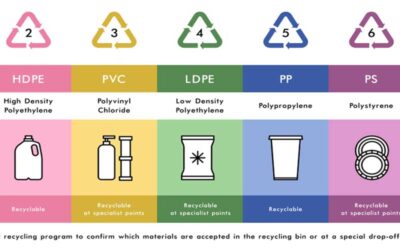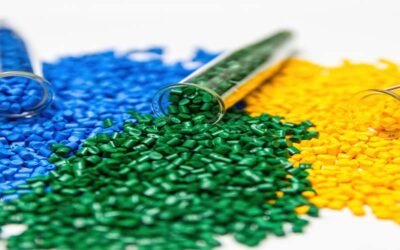Silicone resin is an elastomer that is a combination of good-heat resistance and amazing cold performance.
It is a material that has many advantages over natural rubber. An elastomer is a polymer that is viscous as well as elastic.
Let’s learn what is Silicone Resin, its Definition, Properties, Function, History, Types, Advantages, Disadvantages, and the difference between Epoxy Resin and Silicone Resin.
Silicone Resin Definition
Silicone resins are comparatively low molecular weight polymers with a three-dimensional branched-chain structure.
Along with outstanding thermal stability, many other properties make Silicone resins suited for use as binders in paints, varnishes, and also impregnating products.
A Silicone resin is an inorganic polymer material. It can be molded into fixed objects, films, or filaments. For example coating layers over metal surfaces for corrosion prevention.
Silicone resin generally has high levels of temperature resistance as well as intermolecular forces.
Properties of Silicone Resin
Resin forms flexible or rigid, thermoset, or thermoplastic films, right after drying and crosslinking. It confers amazing properties to the treated surfaces. Their heat stability is extremely good.
These resins offer good protection at constant temperatures of up to 250°C. It can withstand exposure to peak temperatures of up to 500°C for short periods. Silicone resins resist oxidation and have good dielectric properties. These resins, at temperatures of up to 250°C make them ideally suited for use in high-performance electrical insulation products.
This resin also has outstanding water-repellent characteristics and release properties.
Hydrophobicity, hardness, heat resistance, chemical resistance, and compatibility with organic compounds are some characteristics of Silicone resin.
The Function of Silicone Resin
Silicone resin is generally used to manufacture paint. This resin is heat resistant, coil coatings. It is a hybrid resin system due to its elasticity and heat-resistant properties.
Important properties that made this resin the most preferred material for coating raw materials include its hardness, weather resistance, water resistance, and dielectric properties.
In the paint industry, Silicone resins are used as binders. It improves heat resistance paints. Polyester-Silicone resin is suited for pre-coating processes or so-called coil coating.
Silicone resins are also utilized in electrical impregnating and insulation applications: they provide effective protection against weathering and high temperatures. In industrial release and mold release applications, where Silicone oils are commonly used.
Methyl Phenyl Silicones are generally utilized to produce permanent, non-stick coatings.
These coatings withstand high temperatures for kitchen applications. These amazing coatings resins are used in the water-repellent treatment of construction materials. Also used in the consolidation of ancient monuments.
In reality, these complicated compounds contain reactive oils, crosslinkers, and a catalyst that cure to provide the coating a resin-like structure.
History of Silicone Resin
Silicone resins were for the first time, characterized as polymers. It was characterized by the English chemist Frederic Stanley Kipping in 1927. Frederic found that the structure of the repeating unit was mainly that of a ketone which are the polymer chains formed by Silicone atoms along with oxygen atoms attached by double bonds.
In 1940, American chemist Eugene George Rochow prepared methyl siloxanes by the process that is the basis of modern polymerization methods at the General Electric Company laboratories in Schenectady, N.Y., U.S.
At the same time, researchers at Corning Glass were exploring the production of Silicones. In 1943 Corning and the Dow Chemical Company formed the Dow Corning Corporation to produce Silicone goods.
Types of Silicone Resin
Silicone resins are manufactured in three primary forms:
- LSR, or liquid Silicone rubber
LSR is used to create heat-resistant parts in regular use. For example spatula blades.
LSR is a thermosetting material. It means that once cured material cannot be restored to its former form. The material is a two-part compound. It’s a low-viscosity compound that cures heat.
The material has an outstanding temperature range and UV resistance. It has high optical clarity. It is generally sold in bulk containers or large drums.
- RTV, or room temperature vulcanizing Silicone rubber
RTV Silicone rubber is utilized to create cure-in-place engine gaskets.
RTV Silicone rubber is available as single-part called (RTV-1) and two-part called (RTV-2) formulations. It has many applications as a construction sealant. It is generally the choice for potting and encapsulating electronics. The material can be seen in two forms.
- HTV, or high-temperature vulcanizing Silicone rubber.
HTV Silicone rubber is generally compression molded to make all types of medical and industrial products. It is also used to extrude into various cross-sectional shapes.
HTV Silicone is generally sold as solid, gummy rubber blocks that are mostly vulcanized.
Silicone Resin Advantages
Silicone resin offers many advantages some of which are:
- Odor-free
- It is very easy to maintain
- Amazing adherence to the surface of molds
- High-quality surface finish for the molded article
- High thermal stability
- Reduces mold fouling
- Easy cleaning
Silicone Resin Disadvantages
Silicone resins are more expensive than some other elastomers. For example natural rubber.
- Silicone resin has a lower adhesive strength than epoxy and polyurethanes.
- It can be contaminated easily which causes cure issues.
- If it is poorly formulated, it can outgas. And so, it causes contamination of adjacent components.
Where to Buy Silicone Resin?
Check out the best silicone resin reviews to find the perfect one for yourself. And Visit the resin store to buy resins online at a cheap price.
Conclusion
Silicone resins manage common chemicals in a better manner. The material has outstanding UV and ozone resistance.
It also has high gas permeability. The material resists the growth of mold or fungus.
The formulation applies to well-established fire resistance.
I believe you have got a clear concept of the Silicone Resin Definition, Properties, Function, History, Types, Advantages, Disadvantages, and the difference between Epoxy Resin and Silicone Resin.
Read the pillar article to learn about all types of Resin Definitions, History, Types, Functions, Advantages, Disadvantages, and FAQ.

